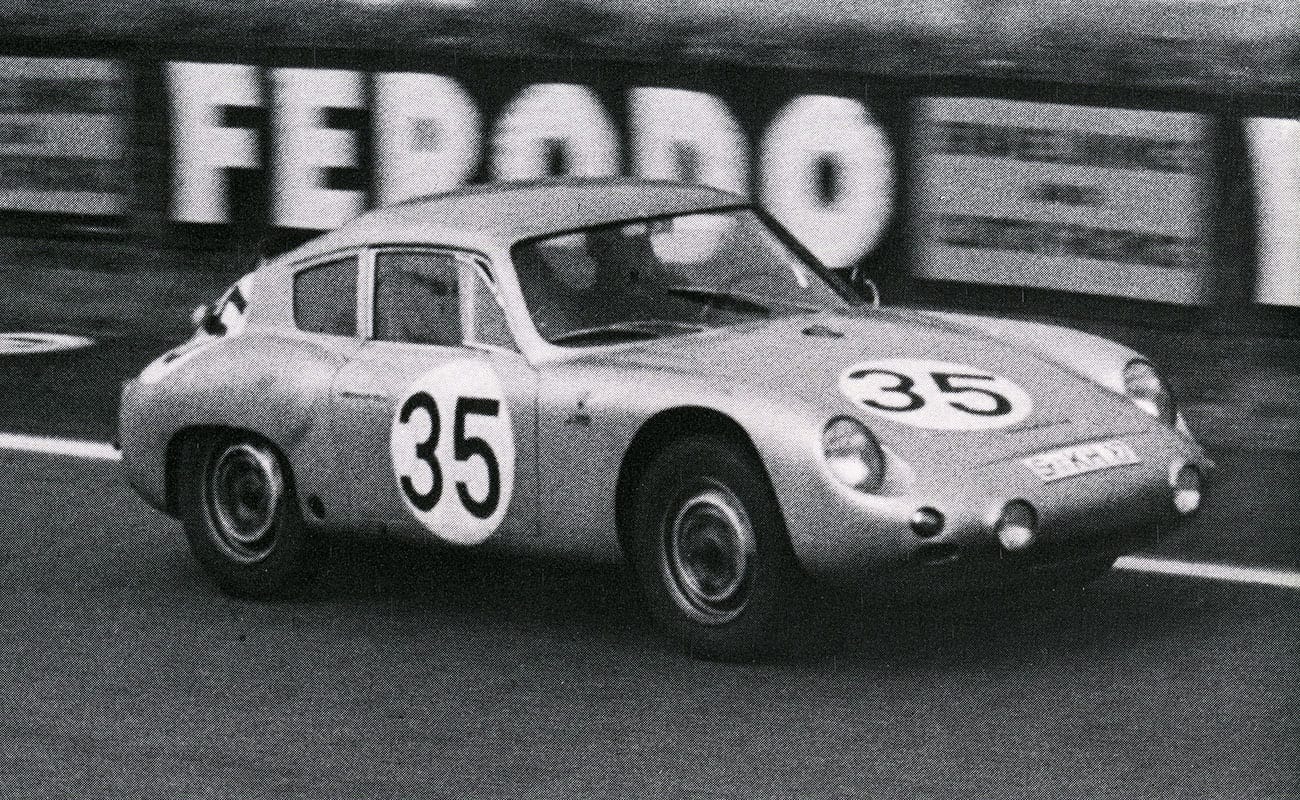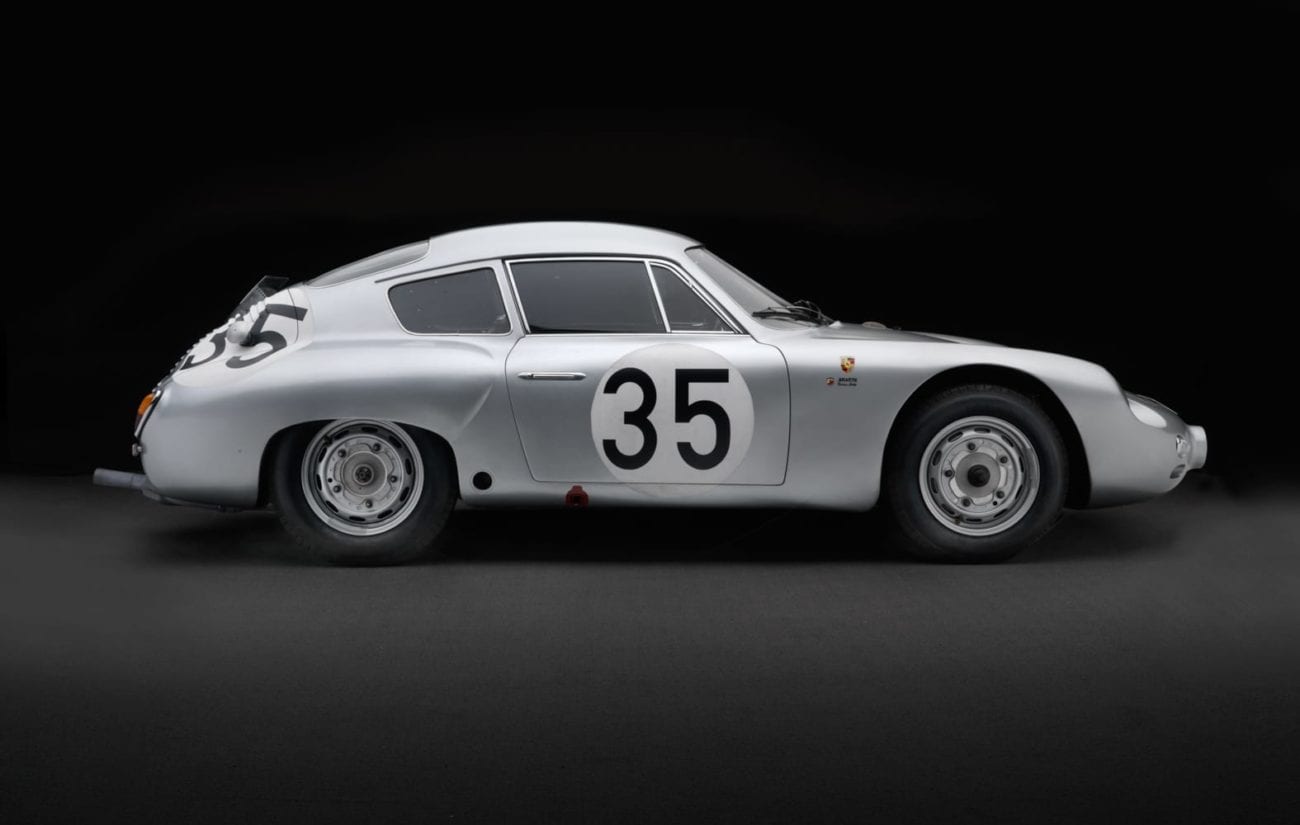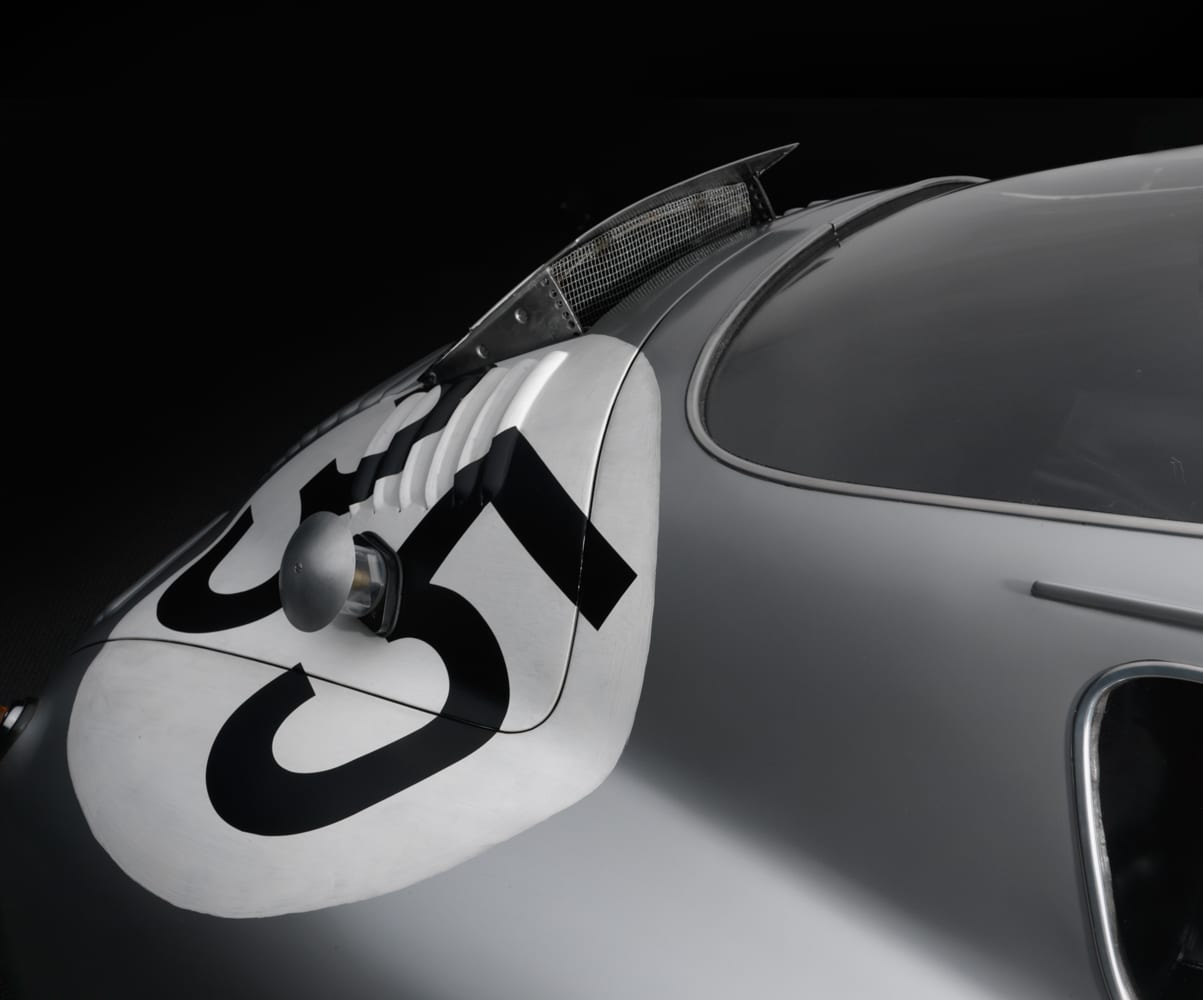Tech Specs
Flat-four air-cooled engine, rear-mounted, twin overhead camshafts, 1587 cc, 135 hp at 6500 rpm.
Before/After
1960 Porsche


About the 1960 Porsche Abarth Carrera GTL
At Le Mans in 1960 the car on display saved Porsche’s honor by being the only factory entry to finish…and by winning its class. Not only was the new Italian-bodied Carrera faster than the German original, it was one of the best-looking cars yet to come out of Stuttgart.
In mid-1959, absorbed with its Formula I program yet anxious to maintain a successful GT effort, Porsche sought outside help to keep its aging GT Carreras competitive. Specifically needed was someone to build 20 lightweight bodies for the standard 356B chassis. Zagato was Porsche’s choice but because the Torinese carrozzeria did so much work for Porsche’s racing competitors, the company asked Austro-Italian Carlo Abarth (a go-between in the Porsche-Cisitalia project over a decade earlier) to serve as middleman again. Without Porsche’s knowledge, Abarth hired Franco Scaglione, formerly of Bertone to design, and Carrozzeria Rocco Motto in Turin to build the new lightweight aluminum bodies for all twenty of the GTLs.
A little over five inches was chopped off the standard Porsche Carrera’s height, a little under five was cut from its width, while the elimination of bumpers pared a full five inches from its overall length. Frontal area was reduced 15% and weight by over 100 pounds. Announcement of the availability of the Abarth-Carrera – at $6,200 more or less – was quickly followed by a complete sellout.
The display car, the first built, arrived at Porsche in early spring of 1960. The Porsche men were distressed by what they got. Out came the Italian show car interior; the front fender openings had to be enlarged to permit full steering lock, and the car’s overheating was only cured by punching the engine lid full of louvers. With roadworthiness attended to, the GTL, with non-homologated disc brakes, finished 2nd in the sports class at the Nürburgring on its first outing.
At Le Mans, driven by Herbert Linge and H.J. Walter, this car was the factory’s sole GT entry. Timed at 138 mph on the Mulsanne straight, Linge said the car was still accelerating past the speed trap. Unfortunately for Linge and Walter, the race was a wet one. The Abarth body allowed water in, the Porsche floor pan didn’t let it out. Seats and floorboards were awash most of the 24 hours.
Subsequently, this car won its class at Monza and the Tourist Trophy before finishing out its career as a hillclimb racer for Swiss privateer Siegfried Lang.
Photos – Peter Harholdt












